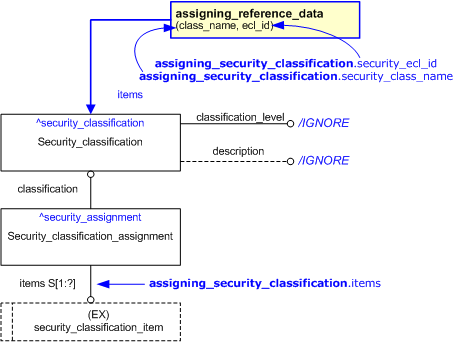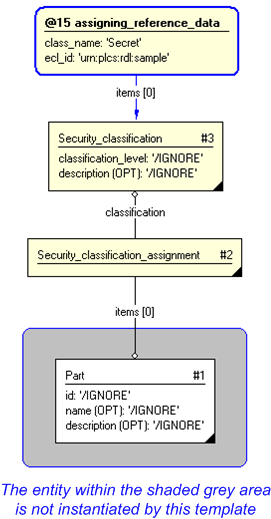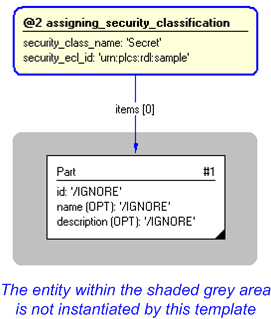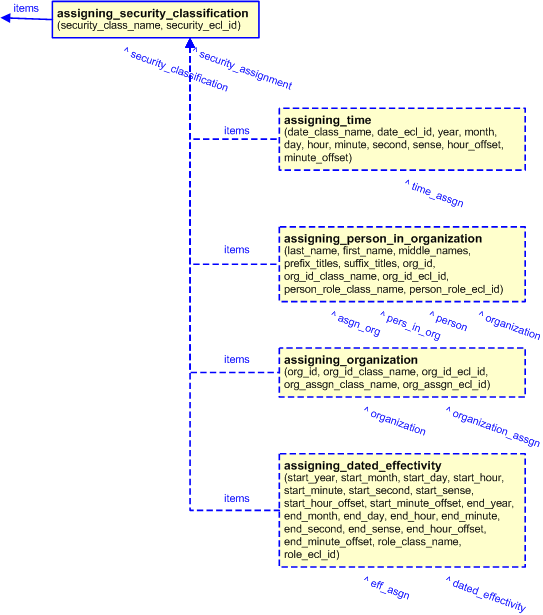
| Capability (C089):— representing_security | Date: 2012/05/23 15:58:39 Revision: 1.7 |
This section provides a business level overview of this capability.
A security classification is the level of confidentiality that is required in order to protect product data against unauthorized usage. This capability describes how such a classification is assigned to product data.
This section provides an overview of the information model that supports this capability.
The EXPRESS-G for representing a security classification is shown in Figure 1 below and explained in the following sections.

A security classification is represented by a Security_classification with the type of the classification being represented by reference data though the classification of the Security_classification by using the template assigning_reference_data.
Security_classification_assignment is used to associate the Security_classification to the product data being classified.
This section specifies how the information model can be further characterized by the assignment of additional information such as dates, approvals and people or organizations.
The following characterizations may apply.
The date and time when the Security_classification was assigned can be represented by assigning a date and time (using the relationship Date_or_date_time_assignment) to the Security_classification_assignment using the assigning_time.
NOTE The assignment of dates and times is described the capability C036: assigning_date_time.
The person or organization that assigned the Security_classification can be represented by using the template assigning_person_in_organization or assigning_organization.
The assignment of the person or organization (Organization_or_person_in_organization_assignment) is classified as: "Security classifier of" (urn:plcs:rdl:std:Security classifier of) to indicate that this organization assigned the security classification.
The following sections define a set of templates for the capability, where a template is a specification of a set of entities that need to be instantiated to represent a given set of information.
This section specifies the template assigning_security_classification.
NOTE An explanation of a template and the associated instantiation path is provided in the Template overview section.
This template describes how to represent the assignment of a security classification to an item.


target
is the parameter to which the
Security_classification
is bound.
target
is the parameter to which the
Security_classification_assignment
is bound.
| Entity in path | Value | Inherited from |
| Security_classification.classification_level | '/IGNORE' | — |
| Security_classification.description | '/IGNORE' | — |



NOTE this characterization is optional.
The date and time when the Security_classification was assigned can be represented by assigning a date and time (using the relationship Date_or_date_time_assignment) to the Security_classification_assignment using the assigning_time.
NOTE The assignment of dates and times is described in the capability C036: assigning_date_time.
NOTE this characterization is optional.
The person or organization that assigned the Security_classification can be represented by using the template assigning_person_in_organization or assigning_organization.
The assignment of the person or organization (Organization_or_person_in_organization_assignment) is classified as: "Security classifier of" (urn:plcs:rdl:std:Security classifier of) to indicate that the person or organization was responsible for assigning the security classification.
NOTE this characterization is optional.
The security classification of an item may change over time. This is represented by associating a dated effectivity with the assignment of a security classification where the effectivity represents the period over which the classification was in force.
The dated effectivity is represented by using the template assigning_dated_effectivity to assign a start and end-bound date to an Security_classification_assignment.
© OASIS 2010 — All rights reserved